by Wallace Wyss –
The movie Ford v Ferrari is about to hit the big screen November 15th (except for those lucky enough to see the premiere November 4th) and I imagine there’s some youngins who don’t know diddley-squat about the events leading up to the big victory at Le Mans in ’66. So I am taking it upon myself to answer 14 often asked questions.
1. Why did Ford want to compete at LeMans?
ANSWER: Ford already had factories in Europe but were a fairly anonymous brand associated with cheap cars. The Mustang was about to be introduced and was providing some excitement but Lee Iacocca head of Ford Division wanted to generate more excitement for the Ford name in Europe. Henry Ford II tried to buy Ferrari but got the door slammed in his face so in ’63 gave orders to his minions to build a car that could beat Ferrari at Le Mans.
2. Was the GT40 based on the Lola GT?
ANSWER: No, Ford liked the fact it had a small block Ford so they bought two of the three made to use as test cars to test the components they were making for the GT40. Eric Broadley, head of Lola, didn’t get along with Ford’s racing boss, John Wyer, and left early to build Lola cars.
3. Was Shelby involved from the get go?
ANSWER: Only peripherally. He had talked Ford into ordering his Cobras and putting them in Ford showrooms and was running a race program with Cobras, plus helping to develop the Shelby R model race car when Ford asked him for help on the GT.
4. Why did Ford fail with the GT40 in ’64?
ANSWER: Ford had John Wyer in charge, Wyer having been head of Aston Martin’s race car program. But Wyer didn’t adapt fast enough to modern race car needs, for instance he didn’t get rid of wire wheels fast enough and they snapped spokes. He also rejected some Shelby recommended drivers, who could have won for Ford like Ritchie Ginther. But mostly it was because the Italian gearbox was no good and the first engine Ford selected wasn’t durable enough.
5. Why did Shelby redesign the body of the GT40?
ANSWER: It was copied too much off the Mustang I show car. Since that car had not been driven that fast (just around racetracks for show) no one realized that at 200 mph it would have about 6” of nose lift. So when Shelby took over development on the GT40 the first thing he did was lower the nose and experiment with spoilers front and rear.
6. Why don’t you hear about GT40 roadsters?
ANSWER: They existed. Five of the small blocks and one big block called “Big Ed”. They weren’t any faster, and were a little wet in the rain. Only one ran at Le Mans. The Sebring victory with Big Ed was the only notable victory for a roadster. But today because of their rarity they are priced higher than most other GT40s.
7. Why did Ford split the Shelby team in two ’66?
ANSWER: Maybe it was Leo Beebe, HF II’s basketball coach, who he put in charge of Ford’s racing, that thought it would be good to have teams competing within the Ford racing team in ’66. Shelby had drivers Ken Miles and Denny Hulme; Bruce McLaren and Chris Amon; and Dan Gurney and Jerry Grant while Holman Moody, a racing shop from North Carolina, ran three additional Ford GT40s. There were also independent teams running Ford GT40s but only Ford Motor Co. ran the big blocks in ’65.
8. Why Didn’t Ferrari run more race cars on the grid in ’66?
ANSWER: Ferrari had won in ’65 almost by accident with a dealer-owned 250LM, already an obsolete car. So they were a tad over confident, thinking something along the lines of “hell, if we can win with a used car, we don’t have anything to worry about.” Also they had been at Le Mans practice in April and realized the big block Ford GT40s had lots of teething problems. And they had already won Le Mans five times in a row and Ford were the amateurs.
9. What about that controversial finish in ’66, where Miles was “robbed” of his victory?
ANSWER: From Ford’s standpoint they didn’t anticipate any kickback when they realized in the 24th hour that three Ford GT40s were poised on the edge of victory and knew a three abreast finish would make a good news photo so they sent instructions to their drivers, including Miles, to slow down so they could all run three abreast across the finish line. But what happened next made Miles very unhappy. Since the McLaren/Amon car had started further back on the grid 24 hours before, it was judged having driven a further distance so Miles had to eat it and accept second place.
10. What about the Shelby Lone Star?
ANSWER: That was a car that Shelby developed as a street car. Mid-engined, small block. Very voluptuous, like a Ferrari P3/4 but which Ford had no interest in backing since they were still making Ford GT Mk.III road cars and Ford GT40 Mk. I road cars. And they didn’t like it much that it was called the Shelby Mk. V instead of a Ford.
11. Was Pete Brock involved in the GT40?
ANSWER: He told me he was leaving about the time the GT40 engineers arrived in California. Up until then he’d been the belle of the ball with the Daytona coupe but Ford decided not to back Cobra racing beyond ’65 so Cobras took a back seat and the GT40s were in and Brock was out.
12. Did Ford give any help to the teams that ran GT40s in ’68 and ’69?
ANSWER: Not officially. A Ford engineer told me they sent the Gulf team a complete engine. Ford was glad to see it win without having to spend a penny even though of course since it was developed from the Mk. I, it made the whole J-car/Mk. IV program look as if it had been unnecessary. They should have just developed the GT40 more, as the Gulf team did.
13. Do you think the Ford GT program had any lasting effect?
ANSWER: As an automotive marketer (former copywriter for the Corvette), I think Ford dropped the car too soon, and should have kept it going off and on, which they did with the ’05 and ’06 and now the current car. Look at how Bentley, with LeMans wins way back in the 1920s, still has models in 2020 tying in to their LeMans victories. They are milking those victories to the nth degree.
14. Are your books available?
ANSWER: My book SHELBY The Man the Cars the Legend is available from Enthusiast books. The out of print book I co-published Ford vs. Ferrari by Pritchard, and the book I wrote with Brian Winer, Ford GT40 and the New Ford GT are both available from Brian at trueford@aol.com
Let us know what you think in the Comments.
THE AUTHOR: Wallace Wyss is marketing his artwork of the Ford/Ferrari era of the ‘60s at Le Mans cars. For a list write mendoart7@gmail.com. For info on the book Ford vs. Ferrari, write trueford1@aol.com
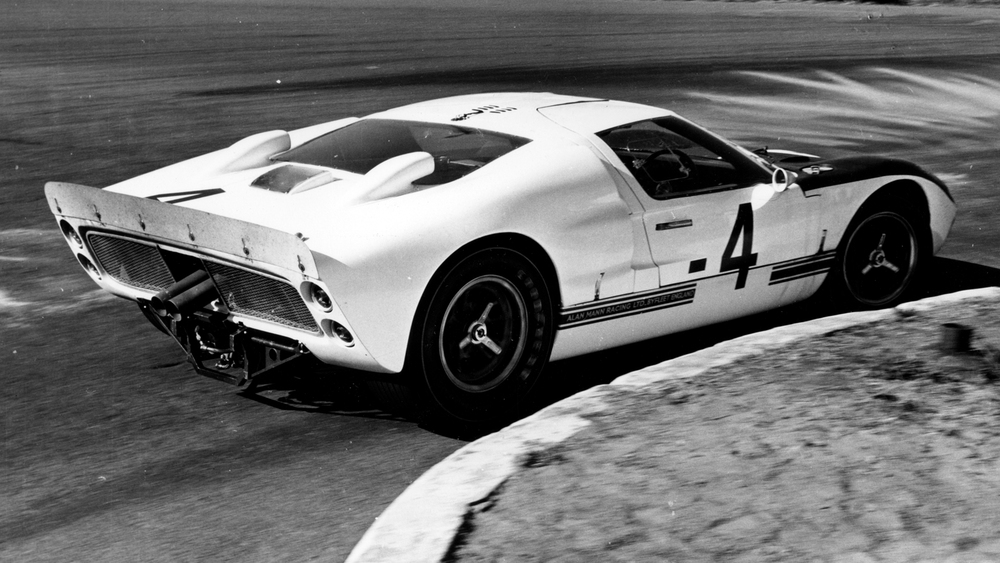
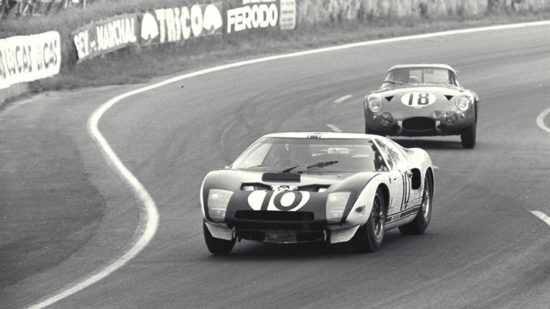
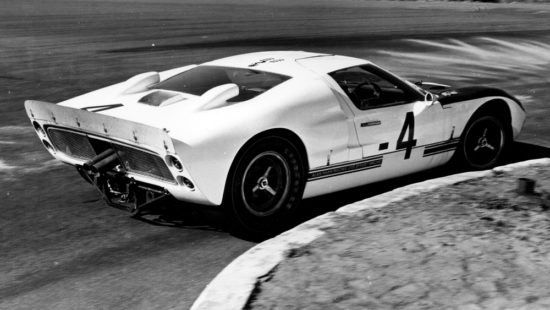
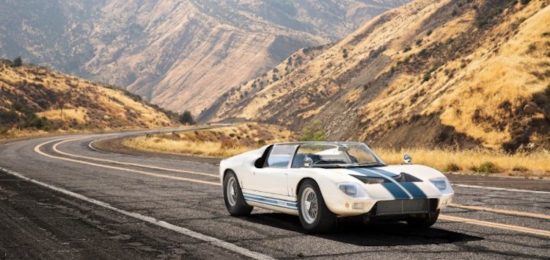
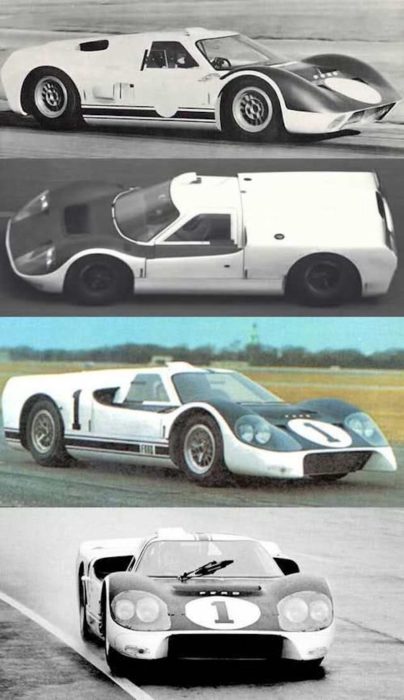




Thank you for the interesting historical perspective.
Thank you for sharing the historical viewpoint.
I was passing through some old articles on the new Ford GT and was surprised to see Jalopnik did the same thing
back on June 18, 2016 with a srory by Patrick George headlined
Ford GT Beats Ferrari Again At Le Mans, America Rules
But when you read the copy you had to get down a few lines before you found out it was a class win:
“Eighteen months ago the automotive world was filled with skepticism over rumors that Ford would resurrect the legendary Ford GT, let alone take it racing. It’s now June 2016 and that car is not only very real, one of them just beat Ferrari to win its class in the the 24 Hours of Le Mans 50 years after the original GT40s did the same.”
So I say again, A CLASS WIN IS NOT AN OVERALL WIN
When are the pro one brand or another going to quit mis-representing their favorite maqrque’s wins?
You say potatoe, I say potato. You say tomatoe, I say tomato. It’s a win. No one said it was an overall win.
The Ford PR man , who was the guest, and the host both gloried in “the recent win” (and on how it was close to a half century celebration of their original overall wins) and to those who don’t know there are many class winners could assume that the current Ford GT was No. 1 out of all entrants. It wasn’t number 1 but they obfuscate enough to make you think it was.
If wishes were horses, beggers would ride….
So who was THE OVERALL winner of all classes. Or is there such a thing?
does anyone have a gt40 they don’t want
Do they handicap cars at LEMANS like sailing regattas. At regattas there are class winner s and an overall winner. The over all winner could finish second but win on time and his handicapping.
Did someone have a faster time for the distance than Ford when they won their class?
If not, did some finish 1st overall due to a handicap.
Or are we saying it’s only a class win because those that came in first in their class didn’t race against the other classes.
To me it sounds as though beat the Ferrari’s and that’s all the public really cares about. Nobody cares who won the JV game. Those guys race JV to get to the Varsity.
If that is not the way it is, I love to hear the Explanation.
I think the general public, those not race buffs, only care about “who took the race,” i.e. “who took first overall.
Here’s the Wikipedia list. The closest to the finish line achieved by a Ford GT in 2016 with 18th overall. WW
Finish
The No. 5 Toyota TS050 Hybrid had a mechanical failure in the final six minutes that stopped the Japanese manufacturer from taking its first Le Mans victory.
With six minutes remaining Nakajima’s No. 5 Toyota was ahead of Jani’s No. 2 Porsche by seventy seconds and looked set to clinch the manufacturer’s first overall Le Mans victory. But Nakajima slowed to less than 200 km/h (120 mph) on the Mulsanne Straight due to a failure of the connector line linking the turbocharger and the intercooler. That caused the car to suddenly lose control over the turbocharger and reduced horsepower. Nakajima slowed even more two minutes later, and stopped the No. 5 Toyota after the start/finish line as the car’s power gave out entirely.[72][73] Jani overcame the gap and overtook Nakajima seconds later to take the chequered flag for the No. 2 Porsche and the marque’s eighteenth overall victory at Le Mans. It was Jani and Lieb’s first Le Mans victory and Dumas’ second after triumphing in 2010. The sister No. 6 Toyota of Sarrazin, Conway and Kobayashi finished three laps behind in second, while the No. 8 Audi of Duval, di Grassi and Jarvis took third to maintain Audi’s record of getting one car on the podium since debuting in 1999.[74] The No. 36 Signatech Alpine of Lapierre, Gustavo Menezes and Stéphane Richelmi led the final 196 laps to take the victory in LMP2.[75] The second-placed No. 26 G-Drive Oreca of Rusinov, Rast and Stevens finished on the same lap as the Alpine. It gave Lapierre his second successive category win and Menezes and Richelmi’s first. The all-Russian SMP Racing BR01 of Vitaly Petrov, Kirill Ladygin and Viktor Shaytar, which came four laps behind in third, completed the class podium.[76]
On the day of the fiftieth anniversary of their first overall 24 Hours of Le Mans victory in 1966, Ford won the LMGTE Pro class with the No. 68 American entry of Hand, Bourdais and Müller. Risi Competizione’s No. 82 Ferrari were provisionally one minute adrift in second position with Fisichella, Vilander and Malucelli after they and the category winning Ford had led all but 26 laps of the race. Ford Chip Ganassi Racing USA’s sister No. 69 car of Briscoe, Dixon and Westbrook was third.[75][77] After the race the No. 68 Ford was penalised a total of 70 seconds towards its total race time for being deemed to have sped in a slow zone and for having faulty wheel speed sensors. Risi’s No. 82 Ferrari had twenty seconds added to its total time and fined €5,000 for ignoring multiple black flags with an orange disc that were deployed to instruct the team to rectify a faulty leader light board after Ford Chip Ganassi Racing filed a protest over the technical problem in the final hour of the event. The result of the penalties reduced the No. 68 Ford’s margin of victory over the No. 82 Risi Ferrari to 10.2 seconds.[78] American also led LMGTE Am with the Scuderia Corsa’s No. 62 Ferrari of Bell, Jeff Segal, and Bill Sweedler edging out the fellow No. 83 Ferrari of AF Corse, driven by Emmanuel Collard, Rui Águas. Perrodo. Al Qubaisi, Long, and David Heinemeier Hansson were third in class for Abu Dhabi-Proton.[77] There were 28 outright lead changes during the race; four cars reached the front of the field. The No. 6 Toyota led thirteen times for 173 laps, more than any other car. The No. 2 Porsche led twelve times for a total of 51 laps.[75]
Pos Class No Team Drivers Chassis Tyre Laps Time/Retired
Engine
1 LMP1 2 Germany Porsche Team Germany Marc Lieb
France Romain Dumas
Switzerland Neel Jani Porsche 919 Hybrid M 384 24:00:38.449double-dagger
Porsche 2.0 L Turbo V4
2 LMP1 6 Japan Toyota Gazoo Racing France Stéphane Sarrazin
United Kingdom Mike Conway
Japan Kamui Kobayashi Toyota TS050 Hybrid M 381 +3 Laps
Toyota 2.4 L Turbo V6
3 LMP1 8 Germany Audi Sport Team Joest France Loïc Duval
Brazil Lucas di Grassi
United Kingdom Oliver Jarvis Audi R18 M 372 +12 Laps
Audi TDI 4.0 L Turbo Diesel V6
4 LMP1 7 Germany Audi Sport Team Joest Germany André Lotterer
Switzerland Marcel Fässler
France Benoît Tréluyer Audi R18 M 367 +17 Laps
Audi TDI 4.0 L Turbo Diesel V6
5 LMP2 36 France Signatech Alpine France Nicolas Lapierre
United States Gustavo Menezes
Monaco Stéphane Richelmi Alpine A460 D 357 +27 Lapsdouble-dagger
Nissan VK45DE 4.5 L V8
6 LMP2 26 Russia G-Drive Racing Russia Roman Rusinov
United Kingdom Will Stevens
Germany René Rast Oreca 05 D 357 +27 Laps
Nissan VK45DE 4.5 L V8
7 LMP2 37 Russia SMP Racing Russia Vitaly Petrov
Russia Viktor Shaytar
Russia Kirill Ladygin BR Engineering BR01 D 353 +31 Laps
Nissan VK45DE 4.5 L V8
8 LMP2 42 United Kingdom Strakka Racing United Kingdom Nick Leventis
United Kingdom Jonny Kane
United Kingdom Danny Watts Gibson 015S D 351 +33 Laps
Nissan VK45DE 4.5 L V8
9 LMP2 33 Philippines Eurasia Motorsport China Pu Jun Jin
France Tristan Gommendy
Netherlands Nick de Bruijn Oreca 05 D 348 +37 Laps
Nissan VK45DE 4.5 L V8
10 LMP2 41 United Kingdom Greaves Motorsport Mexico Memo Rojas
France Julien Canal
France Nathanaël Berthon Ligier JS P2 D 348 +37 Laps
Nissan VK45DE 4.5 L V8
11 LMP2 27 Russia SMP Racing France Nicolas Minassian
Italy Maurizio Mediani
Russia Mikhail Aleshin BR Engineering BR01 D 347 +37 Laps
Nissan VK45DE 4.5 L V8
12 LMP2 23 France Panis-Barthez Compétition France Fabien Barthez
France Timothé Buret
France Paul-Loup Chatin Ligier JS P2 M 347 +37 Laps
Nissan VK45DE 4.5 L V8
13 LMP1 1 Germany Porsche Team Germany Timo Bernhard
New Zealand Brendon Hartley
Australia Mark Webber Porsche 919 Hybrid M 346 +38 Laps
Porsche 2.0 L Turbo V4
14 LMP2 49 United States Michael Shank Racing United States John Pew
Brazil Oswaldo Negri Jr.
Belgium Laurens Vanthoor Ligier JS P2 D 345 +39 Laps
Honda HR28TT 2.8 L Turbo V6
15 LMP2 43 Mexico RGR Sport by Morand Mexico Ricardo González
Portugal Filipe Albuquerque
Brazil Bruno Senna Ligier JS P2 D 344 +40 Laps
Nissan VK45DE 4.5 L V8
16 LMP2 30 United States Extreme Speed Motorsports United States Scott Sharp
United States Ed Brown
United States Johannes van Overbeek Ligier JS P2 D 341 +43 Laps
Nissan VK45DE 4.5 L V8
17 LMP2 25 Portugal Algarve Pro Racing United Kingdom Michael Munemann
United Kingdom Chris Hoy
France Andrea Pizzitola Ligier JS P2 D 341 +43 Laps
Nissan VK45DE 4.5 L V8
18 LMGTE
Pro 68 United States Ford Chip Ganassi Team USA United States Joey Hand
Germany Dirk Müller
France Sébastien Bourdais Ford GT M 340 +44 Lapsdouble-dagger
Ford EcoBoost 3.5 L Turbo V6